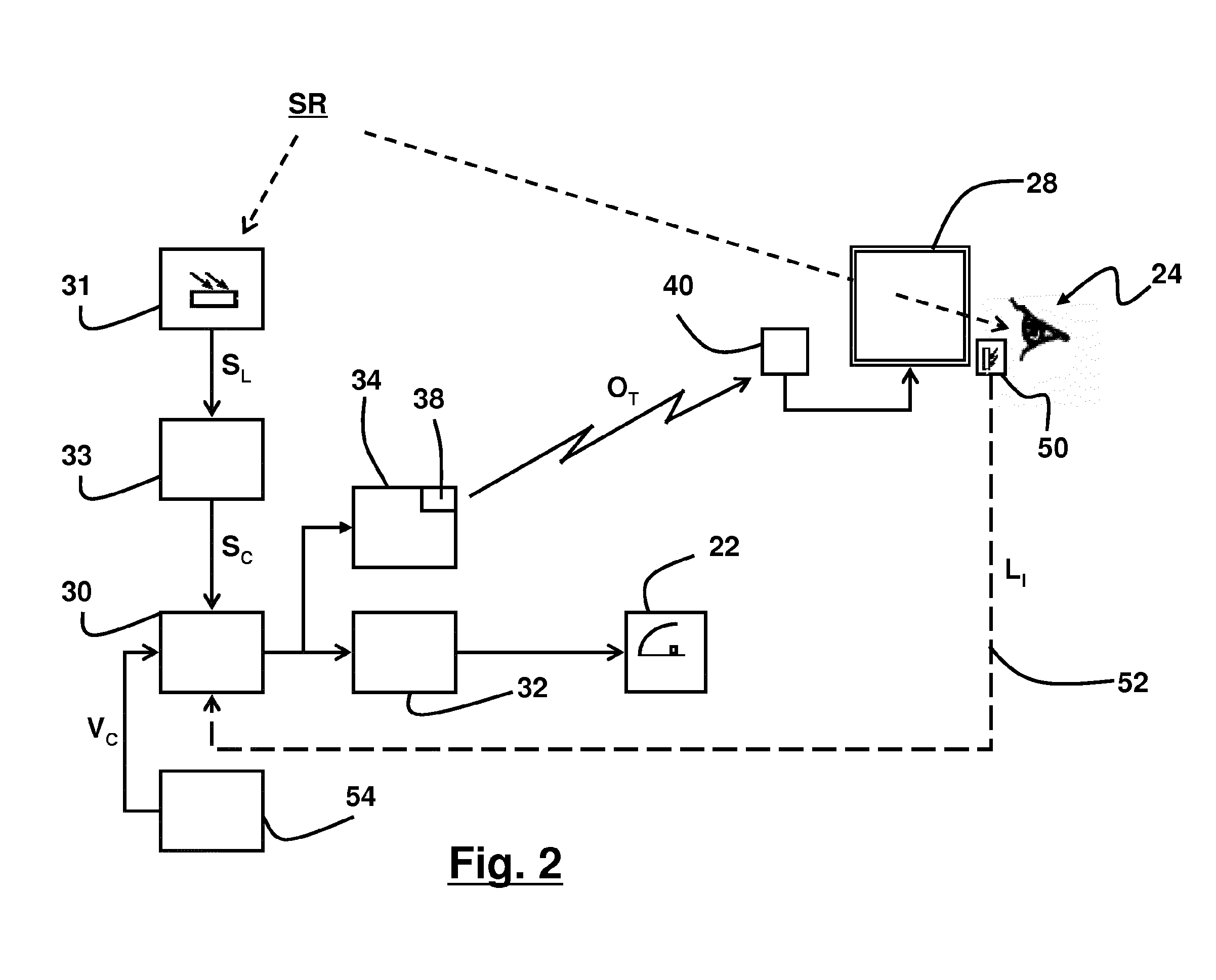Adaptive spectacles for motor vehicle drivers or passengers
a technology for drivers and passengers, applied in the field of glasses, can solve the problems of affecting the perception of road scenes, and returning very gradually to the state of greater clarity, so as to achieve the effect of preventing the movement of the driver or restricting the field of view, and avoiding complex and costly infrastructur
- Summary
- Abstract
- Description
- Claims
- Application Information
AI Technical Summary
Benefits of technology
Problems solved by technology
Method used
Image
Examples
Embodiment Construction
[0067]FIG. 1 shows a partial section through a vehicle indicated as a whole by the reference 20, traveling on a road 10 and controlled by a driver 24, indicated symbolically by his eye.
[0068]In the remainder of the present description, reference will be made solely to the driver of the vehicle 20. However, the present invention is equally applicable to the passengers in this vehicle. Unless expressly stated, the term “driver” is therefore to be understood as additionally signifying the passenger or passengers in the vehicle.
[0069]As mentioned above, the driver 24 may be dazzled by elements of the road scene SR in front of the vehicle,[0070]either in daytime, in very sunny weather,[0071]or at night, by the headlights of vehicles traveling in the opposite direction.
[0072]These conditions are described below.
Daytime Traveling Conditions
[0073]As shown in FIG. 1, in sunny weather, notably at the end of the day when the sun S is low on the horizon, the road scene SR in front of the vehicl...
PUM
 Login to View More
Login to View More Abstract
Description
Claims
Application Information
 Login to View More
Login to View More - R&D
- Intellectual Property
- Life Sciences
- Materials
- Tech Scout
- Unparalleled Data Quality
- Higher Quality Content
- 60% Fewer Hallucinations
Browse by: Latest US Patents, China's latest patents, Technical Efficacy Thesaurus, Application Domain, Technology Topic, Popular Technical Reports.
© 2025 PatSnap. All rights reserved.Legal|Privacy policy|Modern Slavery Act Transparency Statement|Sitemap|About US| Contact US: help@patsnap.com



